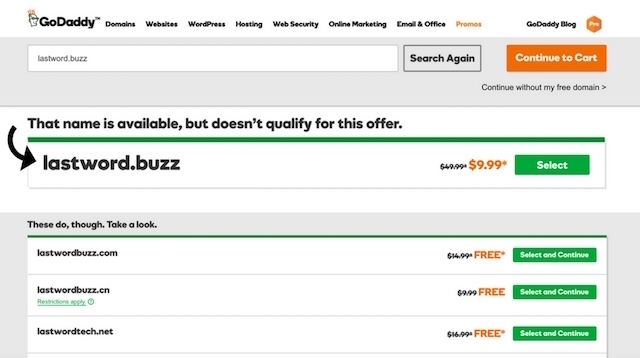There are many web hosting companies out there, all claiming to be the best. How do you choose the one that will meet your needs?
The SmallBusiness.com Guide to Starting a Blog is sponsored and provided by GoDaddy.
- Name your blog and register its domain name (web address).
- Choose a blog platform.
- Choose a web host.
- Connect your domain name to your blog.
- Design your blog.
- Publish your first post.
- Promote that post and publish your second post, etc.
In the early days of blogging, individuals had to set up a computer with the collection of software necessary to display the text and graphics of a website or blog. While someone can still self-host a blog or website, most small businesses and individuals opt to use a web hosting service as a more efficient and easy-to-use alternative.
Hosting typically runs on a server owned by a web hosting company and your blog takes up just a small space on that server.
It’s kind of like renting a single apartment in a building. You pay for the space you use. Unlike an apartment, if your hosting account goes down, your blog disappears from cyberspace and all those conversations come screeching to a halt. So it’s important to choose a reputable blog hosting company with strong security and an uptime guarantee. You need to be sure that your blog will be up and visible to the whole world 24/7.
How to determine the hosting needs for your blog
Storage space
Do you plan to post a lot of images and videos? Do you expect a lot of visitors (or traffic)? Generally speaking, the more space-hogging elements (such as photos and videos) you have on your blog and the more visitors you have at any given time equals the more storage and bandwidth you need.
Backups and security patches
WordPress requires some regular back-end maintenance. If you don’t have the time or don’t feel comfortable doing this, pay someone else to do it.
Technical support
If your tech skills are limited to turning on your laptop, don’t go with a free blogging platform. Pay for support—it will save you hours of scouring the web for help articles.
Price
How much can you afford to pay for hosting each month? Signup prices for shared hosting are sometimes cheap, but then the subscription renewal prices are high. When choosing the right company to host your blog, consider both signup and renewal costs, along with any additional fees like purchasing extra storage. Be sure that all charges are within your budget to avoid the risk of not being able to pay and losing your blog forever.
How to set up a GoDaddy Managed WordPress account
As an example of how to set up a hosted account, here is how one is set up using GoDaddy Managed WordPress hosting.
1 | Go to GoDaddy Managed WordPress.
Create an account if prompted.
2 | Choose your plan.
Unless you plan to have lots of photos and videos on your blog, start with the BASIC plan. You can always upgrade if/when your blog traffic increases. At first, skip the add-ons unless you’re in the market for these solutions. Click CONFIGURE.

3 | Register your domain.
- Note if there is a free or discount promotion.
- Type the name you want to use for your blog into the box and click SEARCH.
- Continue until you find the one you want. Click SELECT.
- Already have a domain name you want to use? Select NO THANKS.

4 | Check the plan length drop-down and adjust if needed.
5 | Choose PRIVACY.
If you’re accepting the free or discounted domain, check the “Keep my contact information private” box. Then check OUT.

6 | Go to Managed WordPress Help. There, you’ll find detailed instructions on setting up a managed WordPress account.
Need more help?
GoDaddy, the sponsor and provider of this guide, always has friendly helpers standing by who can chat online or talk on the phone 24/7 at: (480) 505-8877.
instock
Step 4 | Connect your domain name to your blog
The contents of this guide were developed and sponsored by GoDaddy.
It may include opinions other than those of SmallBusiness.com.

